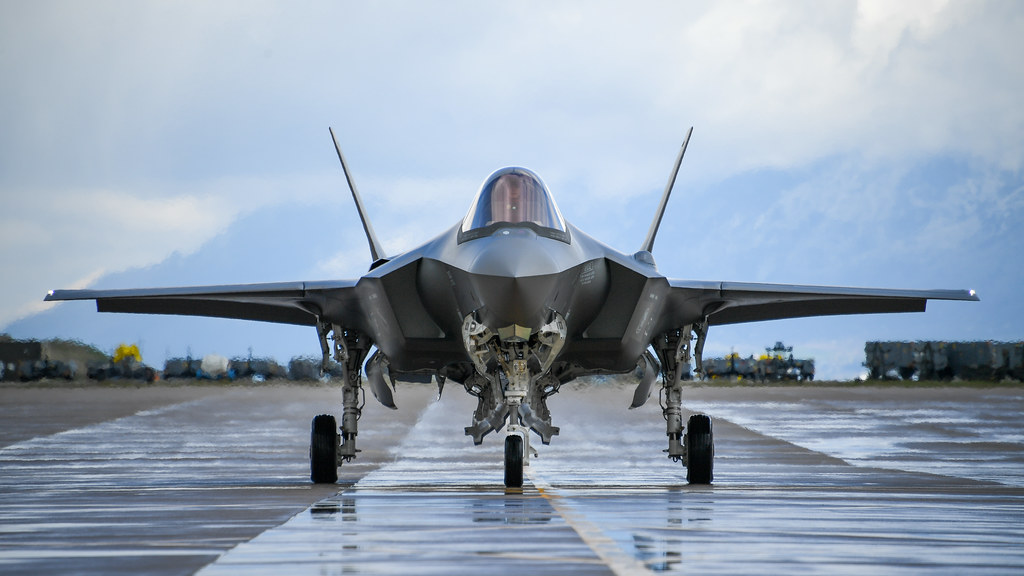
Belgium will acquire additional F-35 fighter jets, a third frigate, and invest billions of euros in air defense as part of a newly revised strategic defense plan approved by the government on Friday. The initiative aims to address capability gaps after decades of Belgium ranking among NATO’s lowest defense spenders.
According to Defence Minister Theo Francken, the Belgian armed forces require a “comprehensive transformation” to be prepared for deterrence and high-intensity warfare, rather than focusing primarily on expeditionary missions. In the preface to the 100+ page Strategic Vision 2025 report, Francken emphasized the need to increase military personnel by roughly one-third by 2034, alongside significant equipment upgrades.
“A country like Belgium can only safeguard its freedom and sovereignty by standing alongside trusted and powerful partners,” Francken stated. “Their loyalty depends on our willingness to show solidarity in defending them.”
Earlier this year, the government committed to raising defense spending to 2% of GDP, which will amount to €12.8 billion (US$14.9 billion) in 2025, breaking from a long history of minimal defense budgets. In 2024, Belgium allocated just 1.29% of GDP to defense, with only Spain spending less among NATO allies. Under the new plan, Belgium will allocate €34.8 billion for capability investments between 2026 and 2034, with €24.7 billion of that to be spent within this timeframe.
“The government’s concrete commitments aim to rebuild Belgium’s diplomatic credibility,” Francken added. “This new strategic vision reflects that ambition.”
Due to years of underfunding, the defense budget cannot fully address every capability shortfall. As a result, Belgium will prioritize key areas such as ensuring its medium motorized brigade becomes fully operational, building a layered air-defense system, stockpiling ammunition, expanding air-combat capacity, and strengthening naval surface-combat forces.
Among the planned acquisitions are 11 additional F-35 fighter jets, valued at €1.67 billion, with orders expected next year. Belgium has already purchased 34 F-35s, eight of which have been delivered, with the entire fleet expected to be combat-ready by early 2031. The report highlights that new threats, including drones and hypersonic weapons, make enhancing air power essential, while the war in Ukraine has underscored the need for superior air capabilities to prevent stalemates.
Currently lacking ground-based missile defense, Belgium will purchase 10 NASAMS air-defense systems from Kongsberg for €2 billion, with deliveries starting in 2026. These will form the foundation of a national air-defense network designed to protect sensitive infrastructure, including NATO headquarters in Brussels and the port of Antwerp—Europe’s second busiest port. The government also plans to procure three long-range air-defense systems at a cost of €2 billion, with the first contract slated for 2029. These systems must be fully interoperable with the Netherlands’ U.S.-made Patriot systems.
The investment plan also earmarks €13.9 billion for land capabilities, with €6 billion specifically for combat maneuvering. Belgium is committed to supplying NATO with a motorized medium brigade, a light brigade, and a joint medium-combat reconnaissance battalion in partnership with Luxembourg. The medium brigade will consist of approximately 7,800 troops and 2,700 vehicles, with the goal of achieving full operational readiness by 2030.
In the naval sector, Belgium will purchase a third anti-submarine warfare frigate for €1.3 billion. This builds on a 2023 order in which Belgium and the Netherlands each acquired two ASW frigates from Damen. Belgium also plans to acquire a third MQ-9B SkyGuardian drone in 2027 for €254 million.
The government’s budget roadmap foresees defense spending reaching 2% of GDP in 2025 and maintaining that level through 2033, before increasing to 2.5%. Following NATO’s June agreement to target 3.5% of GDP for defense spending, Belgium will assess how it might further adjust its targets. According to current projections, defense spending will rise to €16.5 billion in 2033 and then jump to €21.3 billion by 2034.
By 2035, Belgium aims to prepare for large-scale military conflicts under a collective defense framework, safeguard its territory, and adapt to emerging forms of warfare. The military workforce is set to expand from 26,200 troops at the beginning of this year to 29,000 by the end of 2029 and 34,500 by 2034, alongside a significant increase in civilian defense staff. Belgium also plans to increase its reserve force fivefold, reaching 12,800 personnel by the end of the planning period. A voluntary one-year military service for young adults will be introduced in 2026, modeled after the Netherlands’ program launched in 2023.
Francken warned that the risk of war is currently higher than at any point during the Cold War, while Belgium remains inadequately prepared across multiple fronts, including public awareness of security threats. With the U.S. shifting its strategic focus toward Asia, Europe must develop greater strategic autonomy, Francken argued, including a strong European pillar within NATO.
The strategy report also cautions that even if the war in Ukraine ends, Russia could challenge NATO’s resolve, potentially through the invasion of a Baltic state or a targeted missile attack on a member country such as Belgium.




